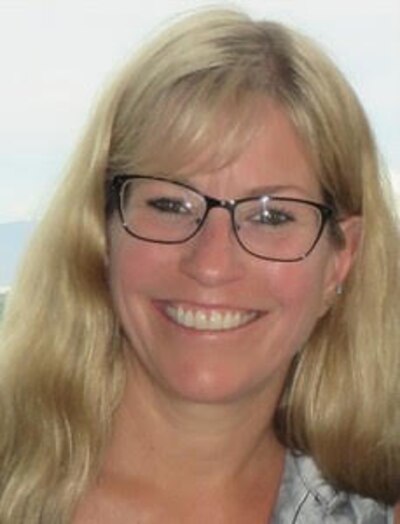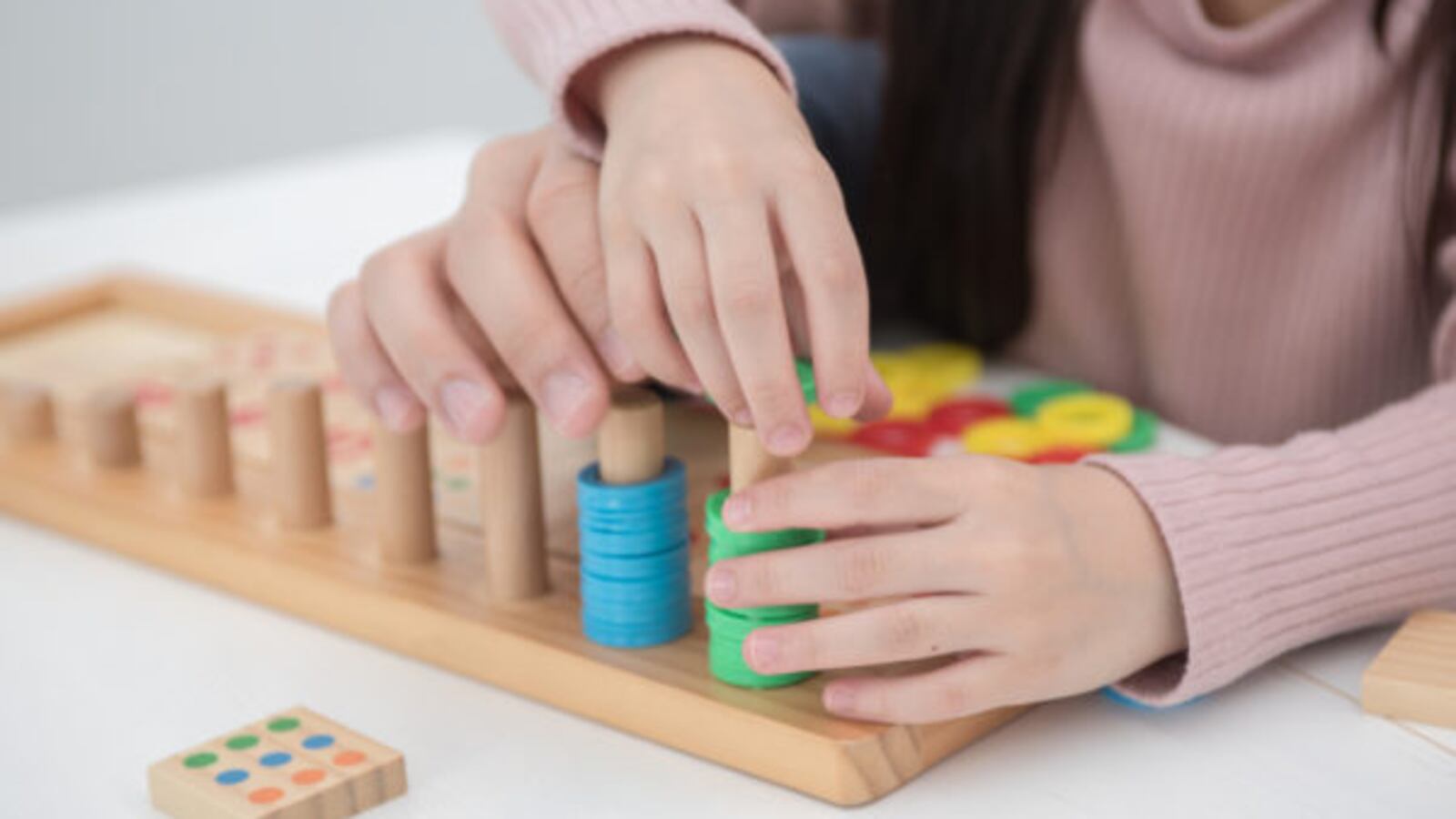Here, in a feature we call How I Teach, we ask educators who’ve been recognized for their work how they approach their jobs. You can see other pieces in the series here.
Julia Mackay almost quit her job as a special education teacher last year. She’d been working at Chipeta Elementary School in Colorado Springs for eight years, and a sudden increase in the number of students with severe needs — without additional staff — pushed her to the breaking point.
But a nudge from her husband prompted Mackay to reach out to the local teachers union president for help. And, in fits and starts, they worked with district leaders to find a solution. The district eventually came up with a new special education staffing model and Mackay stayed on the job.
While the new system doesn’t fix every problem, said Mackay, who was named 2019 Teacher of the Year by the Colorado Council for Learning Disabilities, “Change takes time.”
Mackay, who this year works with kindergartners, first-, and third-graders, talked to Chalkbeat about how she discovered a non-verbal student’s passion for wrestling, why she doesn’t take student misbehavior personally, and what happened after a wildfire traumatized the school community.

This interview has been condensed and lightly edited.
Was there a moment when you decided to become a teacher?
Becoming a teacher was not my first career choice. I have a restaurant management degree and when I graduated college, I never thought I would teach or be a stay-home-mom. What did I know at 22? Then I had children and my perspective changed.
Once my children were both in elementary school, I started volunteering at their school, Chipeta. After a couple of years of frequent volunteering, the principal at the time asked me if I wanted to get paid for doing what I was doing. I did and was hired as a special education assistant.
I worked in that position for four years. The lead special education teacher at the time talked to me about the Teacher in Residence Program. My principal hired me as a special education teacher and I took classes on Saturdays to obtain my certification. If I had to attend college for four years to obtain my certification, I am not sure I would have had the time since my kids were young and keeping me very busy.
How do you get to know your students?
With students who struggle with communicating, I get to know them and their interests through play. I spread out various types of hands-on activities in our room and let the student explore. I learn a lot by just watching which activities they choose and how they use the items.
My favorite story about using this strategy was with a nonverbal student that had Down Syndrome. He came in the room and went straight for a stuffed mouse. He then lay on top of it and slapped his hand on the floor three times. It didn’t take but a second to realize he was pinning the mouse and must know about wrestling.
My son was wrestling in middle school at the time, so this was an action I knew well. I incorporated anything about wrestling into what we did. Eventually, I was able to use reading about World Wrestling Entertainment wrestlers as a reward for completing some academic tasks.
Tell us about a favorite lesson to teach. Where did the idea come from?
Helping students understand prosody — the ability to be expressive when speaking aloud — is my favorite lesson to teach. I have named it “Loud and Proud” and we do this during writing. I have small calendar cards that have sentence starters on the back. I store these cards in a cat statue named Earvin.
Twice a week a student will choose a calendar card from Earvin and write the sentence starter on the white board. The other students write the sentence starter on a piece of paper. The students will then finish the sentence using correct spelling, grammar, and punctuation. We practice adding as much detail in one sentence as we can. Lastly, they read what they wrote “loud and proud.” Each student must say something the speaker did well and something he needs to work on.
It is so much fun to hear them put their personalities into their stories and watch them become good speakers. They aren’t aware of how much they are learning. They are just having fun.
You successfully pushed for a different staffing model for students with disabilities in the district. How did that come about?
Last year was a very tough year for me. It started with six new students with severe needs being enrolled. We were expecting only two. This meant we were way outnumbered and there wasn’t enough adult support to go around.
We reached out to the special education facilitator for help. Multiple staff members from the district would come to our school and observe, but not speak to me or my teammate. The suggestions offered were things we had already tried or went against inclusion, which is what the district promotes. My teammate and I were not getting planning time or even lunch. We were just doing our best to keep everyone safe for the most part.
I went home after eight weeks of non-support from the district, worrying about being out of compliance, what parents were going to do because of the lack of necessary support, and extremely angry. I told my husband I was going to quit. My principal and colleagues at Chipeta could not have been more supportive, but that wasn’t enough. I was tired of working non-stop 10-hour days, taking stuff home every night and weekends without a solution in sight.
My husband, the man I have loved for 33 years, told me he had never seen me quit anything in my life and there had to be something more I could do, but would support whatever decision I made. This was what I needed to hear to motivate me. I reached out to the Colorado Springs Education Association.
I was contacted by the president. He was amazing and helped me turn my anger into action. He listened and offered a reasonable path to a solution. With his support, my principal’s support, and the support of my team, we documented how out of compliance we were, and suggested a solution.
This information was sent to the special education director at the time and her response was not acceptable. We were asked to group students together in a room other than their general education classrooms, with one educational assistant supporting all of them and another rotating a student out for individual support.
This was not inclusion and we would be creating a form of a self-contained classroom. This was not safe for the students. If more than one student ran out of the room — yes this does happen — which student should the educational assistant chase and who would support the students left in the room?
We continued up the chain of command in the district to get the answers and the support we needed. This eventually required the special education department to examine the district’s staffing model and come up with suggestions for improvement. The model they decided on doesn’t fix all of our problems, but change takes time and at least something happened.
What’s something happening in the community that affects what goes on inside your class?
The event in our community that most affected our students was the Waldo Canyon Fire. This happened in June 2012 — thankfully, not during the school year. Ten percent of our students lost their homes. Many, many more were evacuated from their homes, my family included.
There was a little time to begin to heal before we started back to school but we were all still very raw emotionally. The scenery around us had changed so much, it was difficult for me to be on the playground and see the burnt-out neighborhoods and mountainsides that had been so beautiful in the spring. I can’t imagine what it was like for our students. That was a very tough year and one of my first as a teacher. We focused on the emotional state of our students. Academics still happened and students still progressed, but it wasn’t easy.
Tell us about a memorable time — good or bad — when contact with a student’s family changed your perspective or approach.
A few years back I supported two third grade students who were cousins. They were being raised by their fathers who were brothers and had moved to Colorado from Missouri for work. During one parent meeting, practicing multiplication facts at home came up. One dad announced they were moving to Missouri, and stated that in Missouri “kids don’t learn to times until fifth grade. Our kids will be geniuses.” I was astonished and didn’t know what to say.
After that, I incorporated more practice during class time. I came up with fun ways for students to practice at home independently. Knowing support at home isn’t the best definitely changes how I support the students during the school day.
What was your biggest misconception that you initially brought to teaching?
My biggest misconception I initially brought to teaching was that all parents support their children. At one point, a new student enrolled and on his first day, he didn’t know how he was getting home. I asked him how he got to school in the morning and he couldn’t tell me. We went to the front office and learned he was to ride the bus home and what the bus number was.
The bus driver is a retired special education teacher and reported to me the next day that when they arrived at this student’s stop, he didn’t know which apartment he lived in. The bus driver called transportation and figured out which apartment was his. The bus driver waited until the student was inside. This student struggles and if the bus driver wasn’t so aware, what could have happened scares me. We as teachers can only do so much during the school day and without a good partnership with home, the students don’t progress as quickly and at times, I worry for their safety.
What are you reading for enjoyment?
For enjoyment, I am currently reading “When the Crawdads Sings” by Delia Owens. I don’t read as often during the school year as I do in the summertime, but when I have a chance, I sit in my favorite chaise lounge in our front room and read.
What’s the best advice you’ve received about teaching?
The best advice I’ve received about teaching, so far, is not to take things personally. Teachers become attached to their students and when things don’t go as planned and students act out, we feel it in our hearts and can take it personally. This advice helped me look at the not-so-great situations and empathize with the student while thinking of ways to improve the outcomes. These moments still hit me in the heart, but I use them as a way to learn more about my students.



